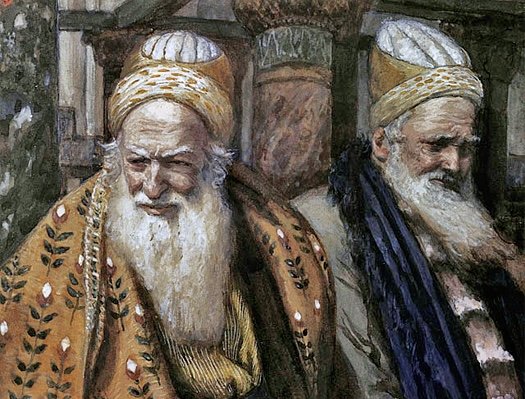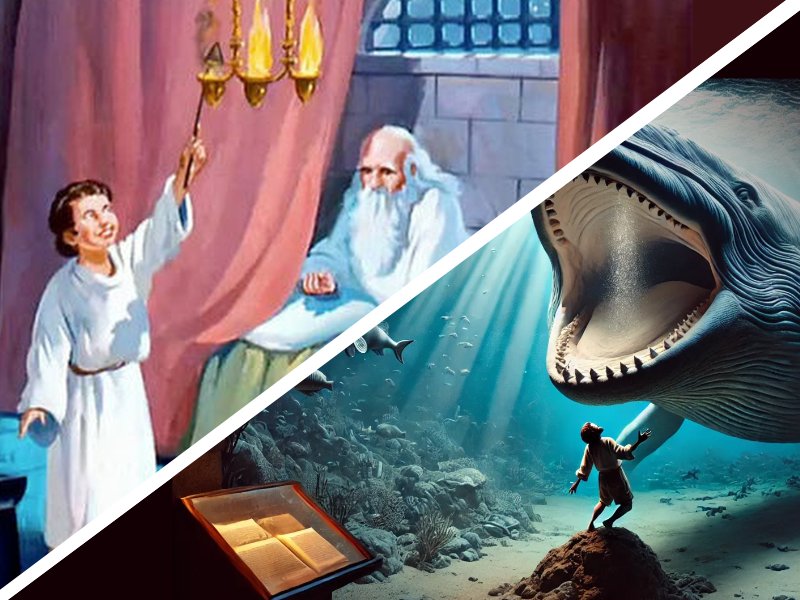In ancient times, repetition of certain themes was an important way of communicating essential truths. Today I’d like to trace an important theme through the book of Matthew. We’ll focus on stories in Matthew 9, 12, and 13, but if other references are given without mentioning a book, you can assume the reference is still in Matthew.
I’ve broken these thoughts into a three-part series, but I’ve published all three parts at the same time. So, if you’re gung-ho and want to read everything all at once, you can. If you want to take time to absorb each part over a couple of days, you can go at your own pace.
At each point, we’ll read a little bit of the story and pull out meaning specific to each account. Then at the end, we’ll show how each piece has tied into the overall theme.
Last time:
Now, let's continue!
2. PREPOSTEROUS PUPPETS

Jesus’ cousin, John the Baptist, is disheartened and in prison. He sends his disciples to Jesus seeking a little encouragement. Jesus obliges. As John’s disciples return to John with Jesus' message, Jesus turns to the people nearby.
Jesus began speaking to the crowds about John: “What did you go out into the wilderness to see? A reed shaken by the wind? But what did you go out to see? A man dressed in soft clothing? Those who wear soft clothing are in kings’ palaces! But what did you go out to see? A prophet? Yes, I tell you, and one who is more than a prophet. This is the one about whom it is written:
‘Behold, I am sending My messenger ahead of You,
Who will prepare Your way before You.’
Truly I say to you, among those born of women there has not arisen anyone greater than John the Baptist! Yet the one who is least in the kingdom of heaven is greater than he. And from the days of John the Baptist until now the kingdom of heaven has been treated violently, and violent men take it by force. For all the Prophets and the Law prophesied until John. And if you are willing to accept it, John himself is Elijah who was to come. The one who has ears to hear, let him hear.
“But to what shall I compare this generation? It is like children sitting in the marketplaces, who call out to the other children, and say, ‘We played the flute for you, and you did not dance; we sang a song of mourning, and you did not mourn.’ For John came neither eating nor drinking, and they say, ‘He has a demon!’ The Son of Man came eating and drinking, and they say, ‘Behold, a gluttonous man and a heavy drinker, a friend of tax collectors and sinners!’ And yet wisdom is vindicated by her deeds.”
(Matthew 11:7–19)
Let’s focus on the text highlighted in blue.
If you’re like me, these lines have always seemed a bit nonsensical: the people of “this generation” are putting the cart before the horse. They’re expecting to manipulate people like marionettes by playing flutes and singing. It makes no sense.
But recently, I’ve begun to understand this from a different perspective.
In this passage, Jesus is contrasting the way an adult thinks with the way a child thinks.
An adult understands that our emotional reality often drives our physical one.

But a child understands the observable world first.
That’s why she says, “Why are you crying, Mummy?”
And has to be told, “Mummy is sad.”
To a child, the observable world creates or causes the non-observable.
For instance:

But listening to music doesn’t cause celebration. And singing a dirge doesn’t cause loss.
Children understand outward actions as causes, not effects. They have an understanding of the surface without understanding the deeper meaning.
That’s why Jesus later uses the Pharisees’ categorizations:

as illustrations of further childishness. Not primarily because they were petty, but because they also didn’t understand the deeper realities at play. They could only understand what was on the surface.
Click below for the next installment:
NOTES










